How To Sew Fabric Trivets With Fabric Twine
Creating fabric trivets has never been easier or more enjoyable! These homemade hot pads made from fabric scraps are not only practical but also make for a fantastic beginner’s project. If you’ve been searching for fabric twine projects, this is one you definitely shouldn’t miss out on!
Fabric Trivets with fabric twine
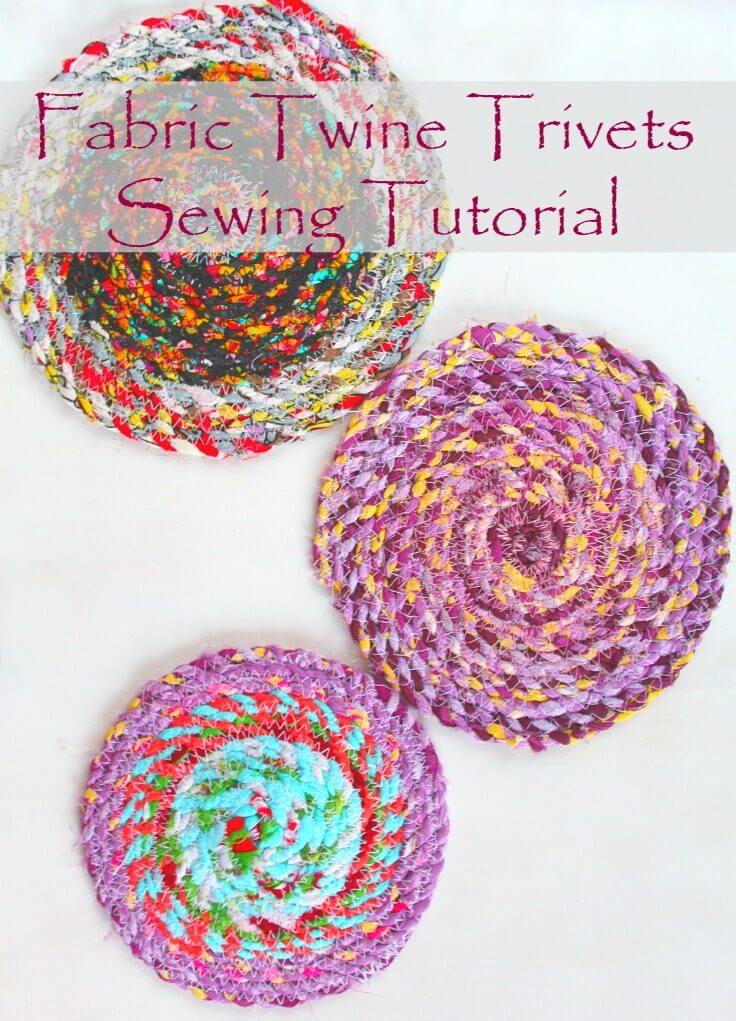
Remember when I made this lovely fabric twine using some of my fabric scraps? I actually had a larger project in mind for those fabric twine spools but as always, life got in the way. The days went by and a few months after, I realized I may never get to complete that project! So I thought I’d better put that beautiful twine to a good use as soon as possible. So I made these super easy, super fun fabric trivets!
Making trivets with your sewing machine using fabric twine is not only easy and useful (I don’t know about you but I never have enough trivets on hand!). But this is also the perfect sewing project to practice your zig-zag stitch. Also a nice opportunity to use jeans needles and thread, if your fabric twine is pretty thick like mine was.
More scrappy projects you will love!
- Pretty fabric yoyo flowers
- Quilted sewing mat with thread catcher
- Mini lavender bags
- Reusable fabric bowl covers
- Triangle fabric weights
- Quilted snap pouch
With these fabric trivets project you will be able to make a bunch of homemade trivets in just minutes, create something useful and decorative while improving your sewing skills. These rustic trivets will add a personal touch to your kitchen and are as cute as a button! Plus, because the fabric is twisted into twine, they’re thick enough so you don’t need to use insulation or cotton batting for these beautiful hot pads.
And these cute handmade pieces of kitchen art could make great unique gift ideas for your friends and family that love spending time in the kitchen. Pair them with these adorable pot holders and you’re in for an impressive gift pack that everyone will feel like a master chef. They’ll absolutely love to use their new kitchen gifts for their hot pots and pans!
When sewing my fabric trivets I basically used the same technique I applied to these rope bowls and I stopped at lifting the base and supporting it against the machine. In other words, I’ve pretty much sewn the base; it’s that easy! If you want to add extra flare, you can finish the edges with binding or double fold bias tape.
Want more rope sewing ideas?
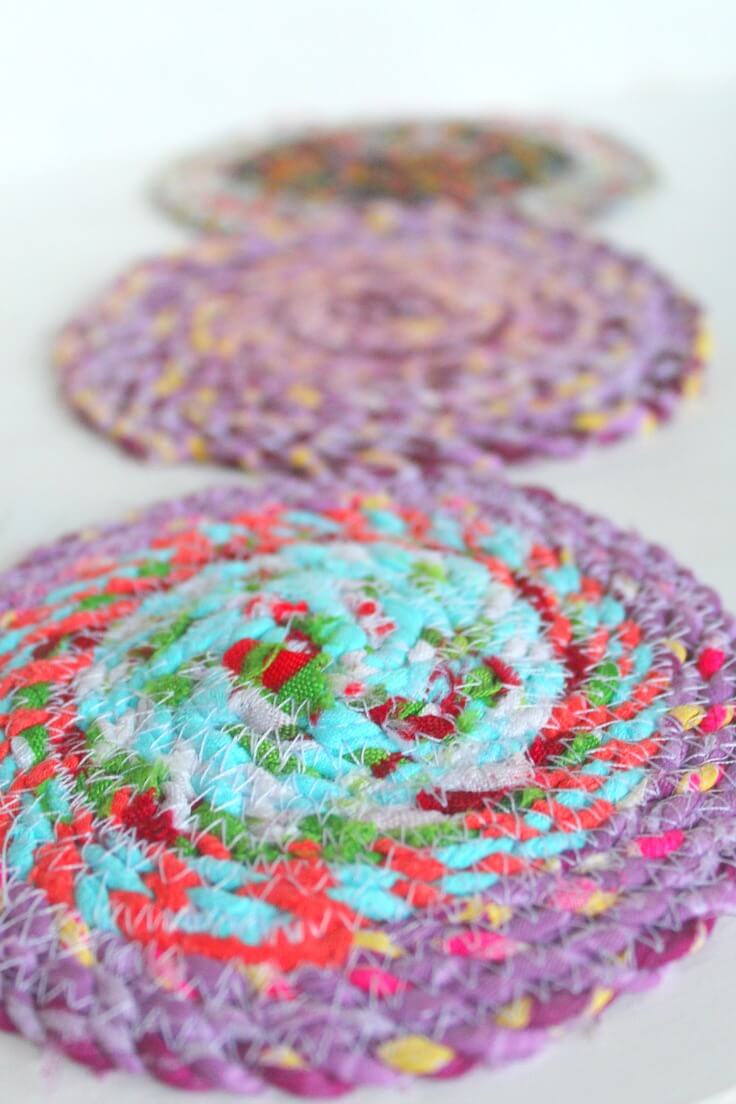
What is the difference between a hot pad and a trivet?
While both hot pads and trivets are used to protect surfaces from heat, there are a few key differences between the two. Hot pads are typically small, flat squares or circles made of fabric with insulation or padding inside. They are often used to place under hot dishes on a table or counter.
Trivets, on the other hand, can come in various shapes and sizes and are typically made of a more heat-resistant material like metal, wood, cork or ceramic. They are used to protect tables and counters from hot pots, pans, or serving dishes.
How to care for fabric twine trivets?
To care for your fabric twine trivets, spot clean with a damp cloth and mild detergent if necessary. If necessary, place them in the washing machine on a gentle cycle and lay flat to dry. They may shrink a bit, but the twine should keep its shape. Avoid using fabric softeners or bleach as they can weaken the fabric twine. Hang to dry completely before using again. With proper care, these trivets can last for years and add a unique touch to your kitchen!
Is sewing experience required to make fabric trivets?
Absolutely not! This is a great beginner sewing project and a fantastic way to use up some fabric scraps you have lying around. With just basic sewing skills and a sewing machine, you can easily make these fabric trivets in no time. Plus, it’s a fun and rewarding activity that allows you to practice your zig-zag stitch while creating something useful for your home.
So don’t hesitate to give it a try and start making your own fabric trivets today! Keep an eye out for fabric scraps and twine colors that will match your kitchen décor for a more personalized touch. You can even mix and match different fabrics and colors to create a set of unique trivets.
Can I use jeans needles and thread for this project?
Yes, you can! If your fabric twine is thick like mine was, it’s a good idea to use jeans needles and thread for extra strength and durability. This will help ensure that your trivets can withstand high heat from hot pots and pans without breaking or fraying.
Are fabric twine trivets thick enough to protect from heat?
Definitely! The great thing about fabric twine is that it’s twisted into a thick, durable rope. This not only makes for a decorative trivet but also provides enough insulation to protect your surfaces from heat. And with the added thickness of jeans thread, these trivets will definitely do their job in protecting your kitchen counters and tables from hot dishes!
How can I add extra flare to my fabric trivets?
If you want to add some extra flare to your fabric trivets, consider finishing the edges with binding or double fold bias tape. This will give a more polished look and also help prevent fraying over time.
You can also experiment with different fabrics, patterns, and colors to create unique trivets that match your personal style.
Use different thread color combinations or even embroidery to add a personalized touch.
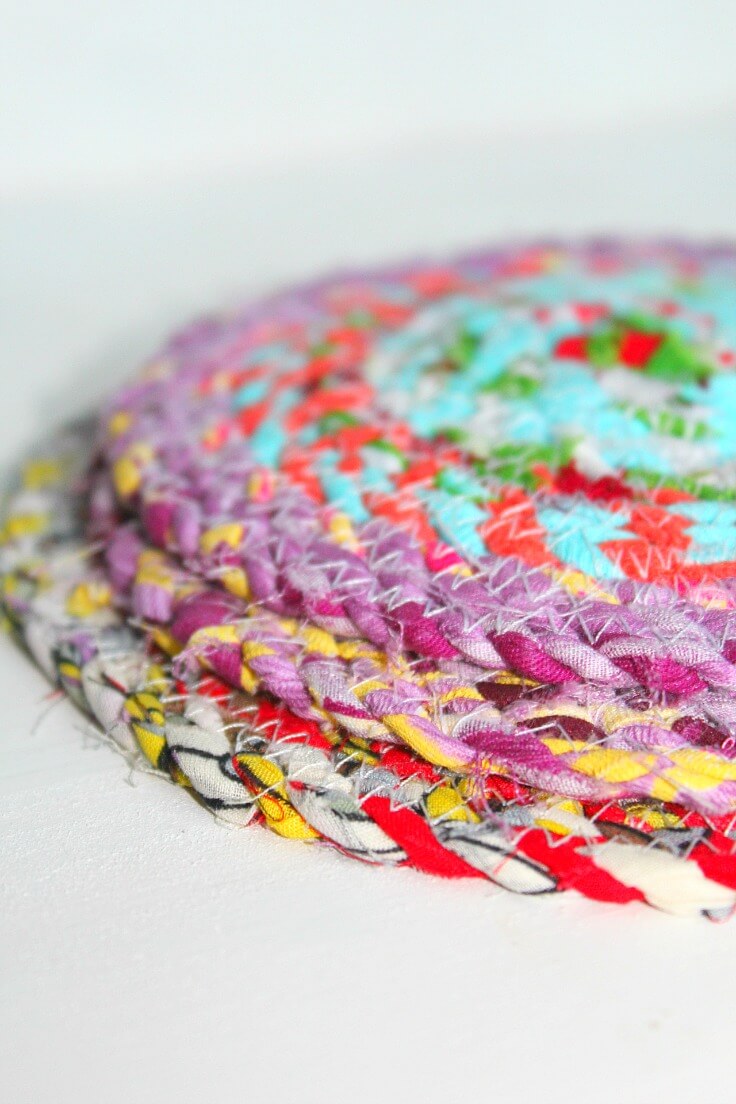
What materials do I need to make fabric trivets?
- fabric twine (get the tutorial to make your own here)
- jeans needle (if your twine is thick, otherwise use a regular, woven needle)
- jeans thread (if your twine is thick, otherwise use a regular, woven needle)
- scissors
- pins
- sewing machine
How do you make a fabric trivet?
- Take the fabric twine and coil it into a small circle, using pins to keep it in place. Remove the pins as you sew.
- Keep the rope hanging on the floor, on your right hand side with the coil on the left under the foot & needle.
- Set your machine to a wide zig zag stitch that will capture both sides of the twine. Don’t sew too tight as the trivet will tend to curl up as it grows.
- Stitch the trivet until you reach the desired size.
- Tightly sew the end of the twine onto the trivet and finish with a few securing stitches.
- And you’re done!
Fabric twine trivets are a fun and easy DIY project that not only adds a decorative touch to your kitchen but also serves as a practical and useful item. So why not give it a try and start making your own fabric trivets today? Happy sewing!
Pin to save for later
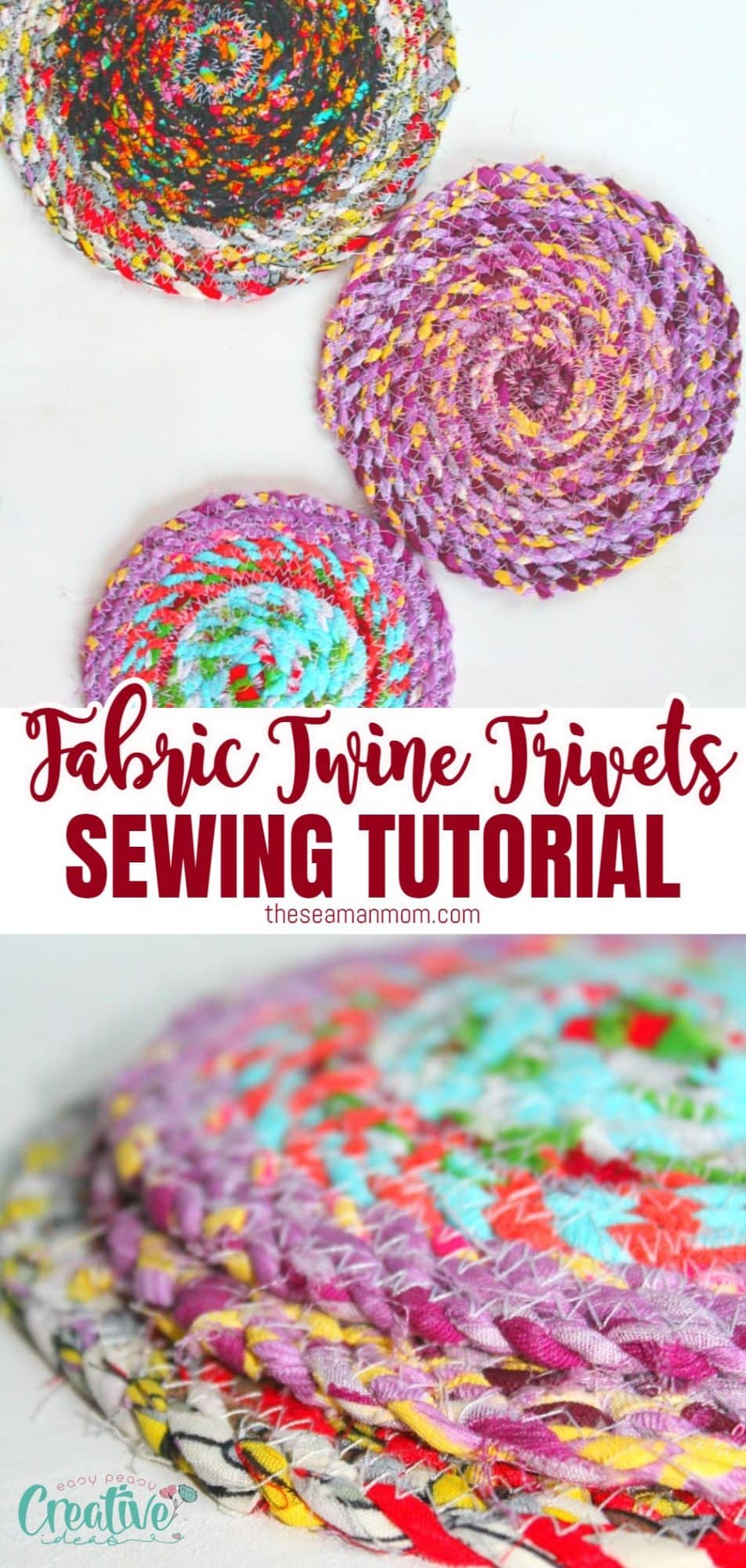
Most popular sewing projects:
- Tips for sewing a round hem
- Corded bag handles
- Flutter sleeve dress pattern
- How to laminate cotton fabric
Article may contain Amazon & affiliate links. As an Amazon Associate I earn from qualifying purchases at no additional cost to you.


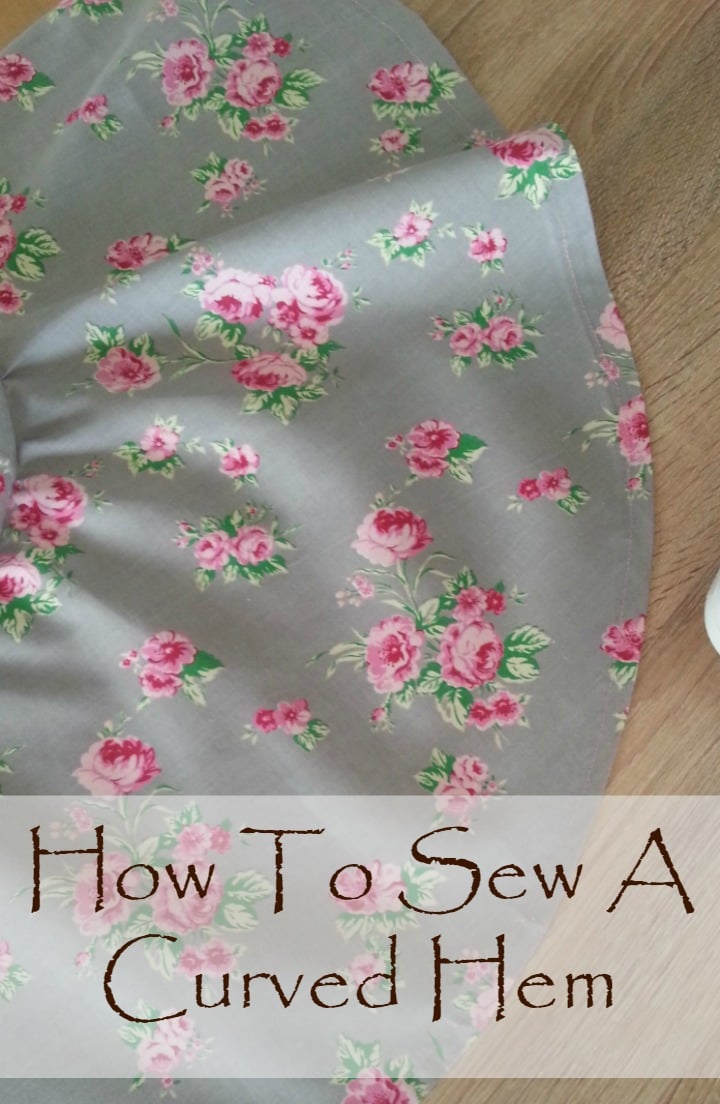
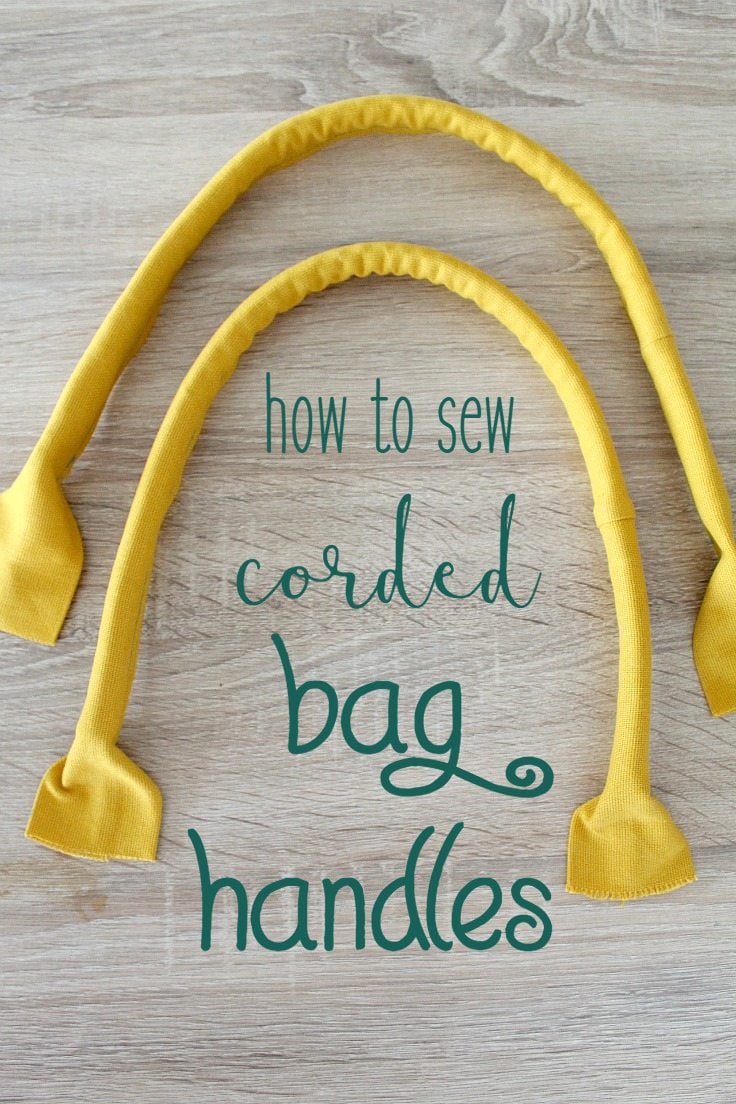
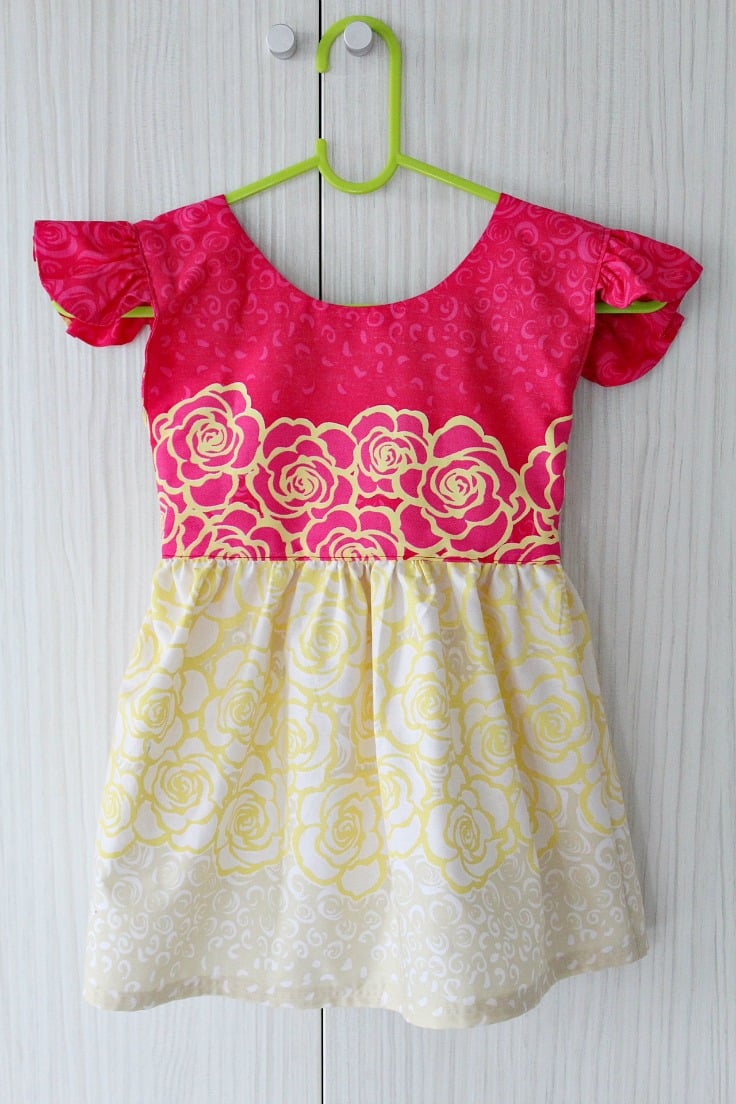


I have tried signing up for your emails but it doesn’t seem to be working – just keeps spinning…thanks – love your website – just retired recently and have kept myself from my sewing and crafts for many years due to working – so anxious to get started again!!!
Hi, What beautiful trivets. My Great Grandmother used to make these. She also made them large enough to put on her kitchen chairs. When I saw these I was flooded with found memories. I am a beginner, I mean my sewing machine is in route to my home.😂 You are using the word twine could I ask what that means? I am quite embarrassed, but I thought I have to ask. Thank you, Stacy🌷
Hi Stacy. Happy you liked my project! I’m referring to twine rope which is made out of two or more strands twisted together. The same principle of twisting two strands applies to making the fabric twine in my tutorial. Hope this helps :)